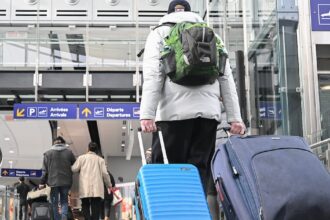As summer vacation begins, a troubling pattern emerges across Canadian communities. Food banks nationwide are reporting a significant spike in demand as families who relied on school nutrition programs now face additional financial pressure to feed children at home. This annual surge highlights a persistent gap in Canada’s social safety net that leaves vulnerable families struggling during what should be a carefree season.
“We see it every year like clockwork—the last day of school rings, and by the following week, our client numbers jump by 20 to 30 percent,” explains Maria Donovan, director of Toronto’s Eastside Community Food Bank. “For many families, school breakfast and lunch programs are essential budget stretchers. When those disappear for two months, parents are suddenly facing hundreds of dollars in additional grocery costs.”
The pattern reveals a hidden dimension of food insecurity in Canada, where approximately 1.8 million people accessed food banks in 2023—a record high according to Food Banks Canada. The summer surge compounds this already critical situation, with many locations reporting their resources stretched to breaking point.
In Montreal, Nourrir Notre Quartier food bank coordinator Jean-Pierre Belanger notes they’ve had to implement rationing measures. “We’re limiting certain high-demand items and reducing the frequency some clients can visit. It’s heartbreaking, but we simply don’t have enough to meet the increased need without these restrictions.”
The phenomenon affects communities across economic spectrums. Even in Alberta’s relatively affluent Calgary, food assistance organizations report a 25% increase in first-time users since schools closed in late June. Many of these new clients are working families who normally manage to make ends meet during the academic year.
“What many people don’t realize is how much financial pressure these families face,” says economist Dr. Amina Shah from the University of British Columbia. “A family with two school-aged children might suddenly need to provide 10 additional meals per week per child. At today’s grocery prices, that’s easily $200-300 extra monthly—money many households simply don’t have.”
The problem is particularly acute in northern communities, where food costs are already substantially higher than national averages. In Yellowknife, basic staples can cost 2-3 times what southern Canadians pay, making summer food insecurity even more severe for families in these regions.
Some communities are implementing innovative solutions. In Winnipeg, several school divisions have maintained limited summer nutrition programs, allowing children to access meals at designated schools regardless of enrollment status. Meanwhile, in Halifax, a coalition of community organizations has launched “Summer Sustenance,” a program providing grocery gift cards to families identified by school social workers.
However, these initiatives remain patchwork solutions to a systemic problem. Advocates argue that more coordinated policy responses are needed at provincial and federal levels.
“What we’re seeing is essentially a seasonal crisis that we know is coming every year, yet we still don’t have adequate preparations in place,” notes social policy researcher Denise Williams. “School nutrition programs have become de facto food security measures for thousands of Canadian children, but the system hasn’t evolved to address what happens when those programs pause.”
As food banks struggle to meet the summer demand surge, the situation raises profound questions about long-term solutions. Should summer nutrition programs become standard extensions of school-year offerings? Can tax benefits for families with children be structured to provide additional support during school breaks? As Canadian families navigate another challenging summer, these questions demand attention beyond charitable responses.
As we witness record numbers at food banks across the country, perhaps the most important question is this: in a nation of abundance, how have we normalized children’s access to adequate nutrition becoming contingent on whether school is in session?


















